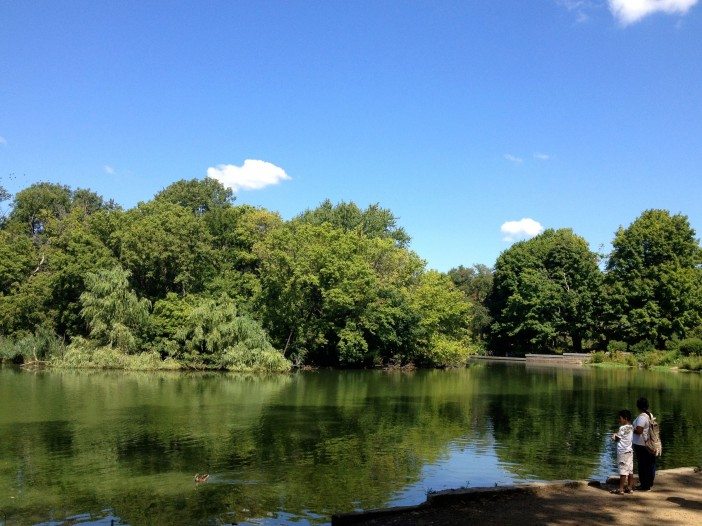Having 3 different locations and over 6 million visitors The Metropolitan Museum of Art, “The Met“, is the largest art museum in the United States. The Met’s collection holds over two million different art works and is divided among 17 curatorial departments. The primary location of the museum is at the edge of the Upper East Side at 1000 fifth avenue, its second location at Fort Tryin Park in Upper Manhattan, the third location is a much more recent addition located alongside Madison Avenue, also on the Upper East Side. The Metropolitan Museum’s largest art gallery is at its primary location, the secondary location contains a collection of art, architecture, and artifacts from medieval Europe. Finally its tertiary location expanded upon the museums modern and contemporary art.
The Metropolitan Museums collection consists of works from classical antiquity, ancient Egyptian art, Different European Artists and a collection of American modern art. The Met also has an extensive collection of African, Asian, Oceania, Byzantine, and Islamic art. The Met also holds musical instruments as well, costumes and even accessories, alongside this, antique weapons, armor and so many more historic pieces from around the world. All of these pieces coming from different periods of history, some come from first century Rome and others through modern America.

The metropolitan Museum of art came into being on February 20th, 1872 and was established in order to encourage and develop the study of fine arts and to help people understand the value of modern art. In the beginning the museum was housed in a building that was located in 681 Fifth Avenue. The First president of the Metropolitan Museum was a man named John Taylor Johnston, he previously was a railroad executive who used his own personal art collection as the first collection presented by the museum. He was helped by two other people, Publisher George Palmer Putman who became the founding superintendent, and Artist Eastman Johnson who acted as the co founder of the museum. there where also many other co founders of the museum such as Howard Potter who was a formally Civil War officer, and various other industrialists. Luigi Palma di Cesnola was the first director of the museum and served from 1879 to 1904. During this time the Met’s collection had grown rapidly, at first the museum had contained Roman works and over 150 artist works that where primarily European paintings. Along with this the museum created a new program and helped with running a series of educational programs, with the intention of providing vocational training and classes for fine arts the Metropolitan Museum of Art Schools was opened up. After a few years the museum had expanded and had added a concert hall named the Grace Rainey Rogers concert hall and was opened in 1954. This concert hall had eventually had over 200 events each season with multiple performers playing there. the concert hall was directed by William Kolodney from 1954 to 1968 and then by Hilde Limondjian from 1969 to 2010.

in the 1960’s the Metropolitan Museum was expanded in order to include a chairman of the board of trustees. This was led by Robert Lehman who had helped the museum gain more art works since 1911 and for the next six decades helped add to the art collection of The Met. Lehman died in 1969 and his foundation then proceeded to donate over 3,000 works to the museum. This directly led to the museum opening a sperate wing, appropriately named, the Robert Lehman Wing which was opened to the public in 1975. This collection was then called ” one of the most extraordinary private art collections ever assembled in the United States”.

Today the chairman of the board is a man named Daniel Brodsky who had been chairman since 2012. Brodsky has changed one of the old policies of the museum, while previously the it was a free admission in order to enter the museum it now has a $25 out of state charge and for foreign visitors, so keep that in mind if you plan on visiting. If you are coming in out of the country, keep in mind that My Destiny Limo can take you to the Metropolitan Museum hassle free. My Destiny Limo is a fantastic car service to the New York Metropolitan Museum, regardless of the distance this transportation company provides an excellent choice if you want a limo service to the Metropolitan Museum.

Transportation to the Metropolitan Museum is also something of great interest when designing the building. Normally people prefer to take the subway to the museum however only 3 trains actually stop there. Now a days its much safer to drive to the Metropolitan Museum and much more efficient. However, often people will opt to use a car service in Manhattan, sometimes people may even use a limo service in Manhattan. If you want to take a trip to the Metropolitan Museum the best company to use would be My Destiny Limo. My Destiny Limo will get you there on time and hassle free so you can sit back and enjoy the ride to the Metropolitan Museum in a relaxing environment. If your are outside of the New York City area and you don’t have to worry either, My Destiny Limo has a car service from New Jersey to the New York Metropolitan Museum, car service from Connecticut to the New York Metropolitan Museum, car service from Pennsylvania to the New York Metropolitan Museum, car service from Washington D.C to The New York Metropolitan Museum, and even a car service from Massachusetts to the New York Metropolitan Museum. So don’t hesitate to book your reservation with My Destiny Limo today!
Overall the metropolitan museum of art has many different exhibits for any visitor and so many activities for different ages. From the famous Met steps to the inside concerts and the Metropolitan concert hall there something for anyone. My Destiny Limo will take you there today!











